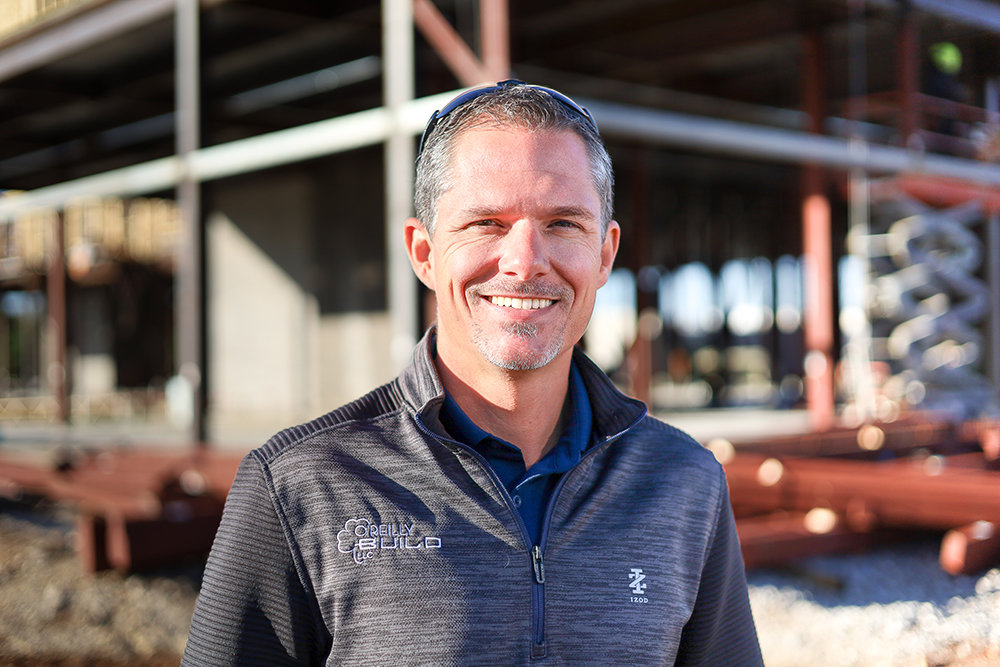YOUR BUSINESS AUTHORITY
Springfield, MO
YOUR BUSINESS AUTHORITY
Springfield, MO

The Associated General Contractors of America reported recently that 93% of construction firms have open positions and 91% of those are having trouble finding people to fill them. What are some of the challenges you’re seeing?
We’ve been trying to hire a superintendent. We put out requests and don’t really get too many resumes come back through, and the ones that we get aren’t necessarily the best candidates. It seems like the people that want to work and the ones that are most qualified are kind of sticking where they’re at. On the subcontractor side, labor shortage has been a thing that’s been real for the last couple of years. It’s created its own challenges, mostly schedule on our projects. On our multifamily and our senior projects, projects that we used to be able to complete in a year, now it might take 14 months just because you’re dealing with a labor shortage across the field, whether it’s a painter or an electrician.
What’s driving that shortage, and have you found any innovative solutions?
We’ve pushed people to be college educated. They want to be managers. Nobody really wants to swing a hammer or put together ductwork anymore. That is creating our shortage, and it’s going to potentially here soon start to swap the roles of the value of labor, and people that are willing to swing a hammer will start to be valued higher and they’re going to start to make more money. A lot of it is pushing us to challenge ourselves on how we build what is our process. We’re looking at more efficient ways of building. We’re starting to tiptoe into the modular building scene. We’re even in communications with 3D printing and trying to find different avenues on how we can build the same structures that we’re building now but with less labor. Maybe it’s robotic systems and then we have people that are managing those systems.
How has the developer side of the market been impacted? What’s the appetite for starting new projects coming off these uncertain years and potentially heading into a recession?
We’re wondering the same thing. We keep a pretty dialed-in approach on how our clients are doing. How are they doing with underwriting these projects, and can they still make the numbers work? So much of our work with our clients is in the preconstruction side of things. We’re helping them budget very early in the projects. We’re identifying very quickly, well, the direction you’re going is going to end up bringing this project in $1 million over budget based on current market. We’re almost having to reverse-order the direction of when are we brought into the picture. By bringing us in sooner, we’re able to identify that, but we’re spending a lot more time and a lot more effort and money on the preconstruction services side of our group.
The past two years had unprecedented highs for building materials, but industry analysts are saying those prices are stabilizing some. What are you seeing, and are there particular materials still causing trouble?
We’re watching the lumber market because we do so much in the lumber market with a lot of our projects being wood frame. It’s come down and now is kind of back on the climb, nowhere near as bad as it was a year and a half ago. Everything else is kind of like what you said; it has made this steady incline over the last year and a half, upwards of 20% increases in a lot of categories over the last two years, and now we’re starting to finally see the price increases from the manufacturers are not coming every two months. They’re starting to come every six months or we’re starting to see maybe just an annual increase like it used to be. We’re hoping that eventually the curve will go back down.
Lumber is a key number to watch. Is that price leveling coming from the cool-off in the housing market with rising interest rates, are mills producing more lumber, or what’s behind that?
You hit a couple of the big ones on the head. The housing market is starting to slow down because interest rates are going up, which is the whole point. The government is trying to reset the economy a little bit here and slow things down so that the supply chain can catch up. But there are a lot of other factors. You go to a lumber mill who has a labor shortage. Well, the labor shortage is also driving the cost of how much lumber can they produce in a month. You can’t just look at the housing market slowing down and therefore the supply is going to increase and we’re going to see prices drop. There’s too many other factors involved, from shipping to handling to labor to demand.
Connected to Watkins Elementary School is a new storm shelter now under construction.
Updated: Systematic Savings Bank to be acquired in $14M deal
STL construction firm buys KC company
Webster University's deficit triples
‘Dress for your day’: Companies are relaxing dress codes amid evolving ideas about fashion
Missouri House speaker accused of obstruction in ethics probe
Former CoxHealth colleagues starting communications firm
Developer targets opening by month's end for $10M apartment complex